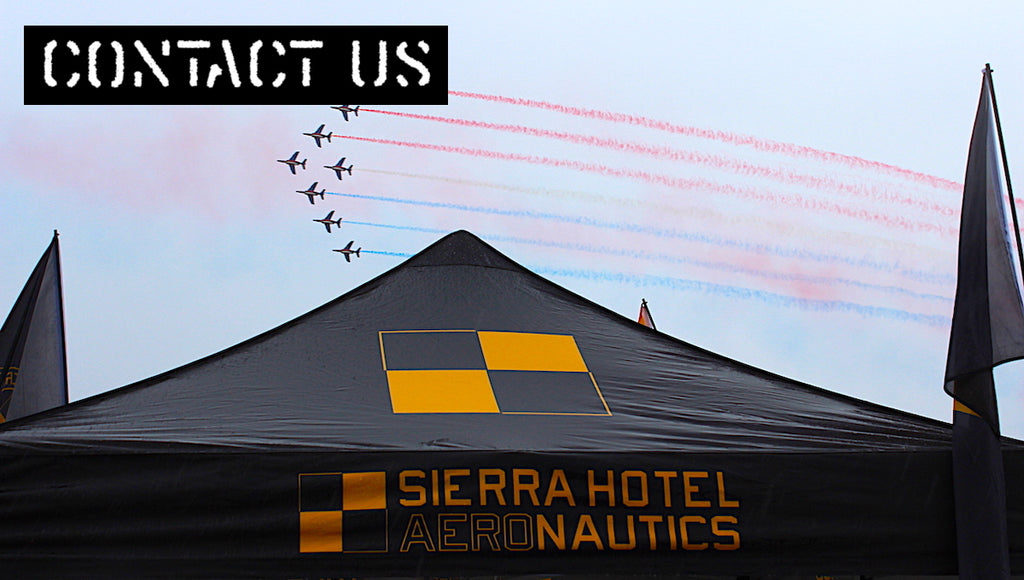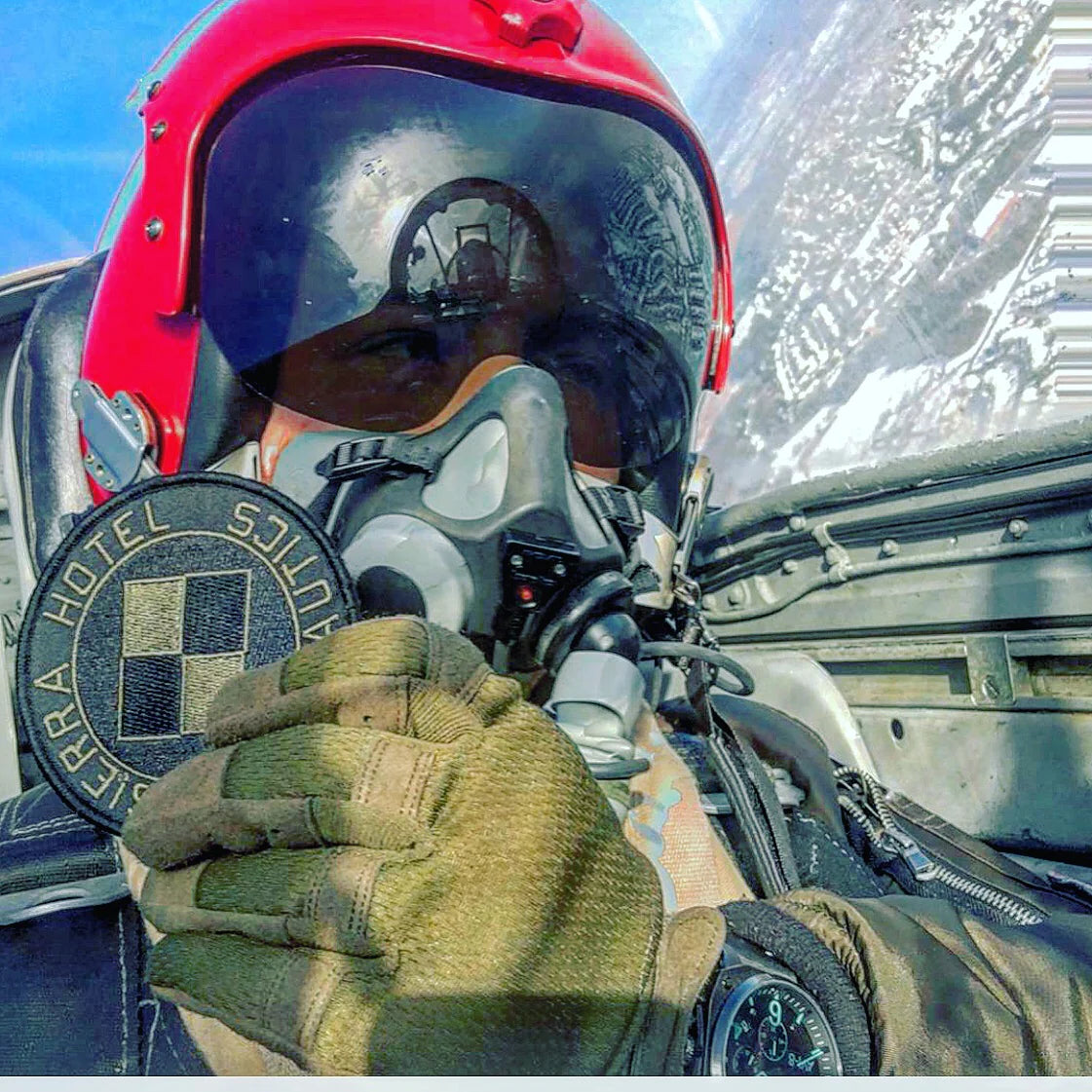Deke's Ghost Flight

Astronaut Donald K. "Deke" Slayton (on right) and 1st Lt. Ed Steinman (on left) beside a Douglas A-26 bomber in the Pacific Theater of Operations during the summer of 1945. While the exact location is unknown, the photograph was most likely taken on Okinawa. 1st Lt. Slayton was one of only two NASA astronauts to fly combat missions during World War II.
Deke spent one year as a B-25 pilot with the 340th Bombardment Group, completing 56 combat missions. In 1944, he returned to the United States for a year before being assigned to Okinawa with the 319th Bombardment Group. As part of the first group to fly combat with the A-26 aircraft, he flew seven combat missions over Japan. Slayton logged more the 6,600 hours of flying time, including 5,100 in jet aircraft. He was named as one of the seven Mercury astronauts in April 1959 and was scheduled to pilot the Mercury-Atlas 7 mission, but a heart condition was discovered, sadly preventing him from moving forward in his astronaut training. He would not fly his mission.
While grounded, Slayton took several measures to attempt to be restored to flight status, including regularly exercising, vitamins, quitting smoking and coffee and reducing his consumption of alcoholic beverages. In 1970 his palpitations became more frequent and he started taking experimental daily doses of a crystalline alkaloid. This treatment was successful, but concerned that taking medication would still disqualify him from solo flying, Slayton stopped taking it against doctor's orders.
After a decade of seeing doctors around the world, and a long period without heart fibrillation, Deke was determined to not have a coronary condition. On March 13, 1972, NASA announced that Slayton had returned to flight status
Three years later, Deke climbed aboard a Saturn 1B rocket along with fellow astronauts, Brand, and Stafford. At 19:50:00, July 15, 1975 (UTC), the mighty Saturn 1B ignited her engines, sending Deke on his one and only space flight, as the Apollo docking module pilot. This flight marked the last manned flight before the Space Shuttle Program was launched.

While Deke never flew to space again, he remained with NASA until 1982 in a variety of capacities, from his involvement in testing the Space Shuttle Orbiter Enterprise, to modifications of several NASA Starfighters and Talons to help train the astronauts. While working on the Space Shuttle, Deke also assisted in developing the Space Shuttle Carrier Aircraft 747. Formally leaving NASA on February 27th, 1982.
In 1992, Slayton was diagnosed with a malignant brain tumour. On June 13, 1993, Deke flew west from his home in Texas from the illness, at the age of 69
He died at home at 3:22 a.m. on June 13, 1993, surrounded by his wife and daughter.
John Wayne Airport in California on June 13, 1993 at 7:57 a.m.. The unmistakably marked aircraft that Deke loved to fly...appeared in the skies above.

Deke's well-known bright red Williams W-17 Stinger racer, emblazoned with race numbers was a loud aircraft, that would draw attention to itself anytime it took to the sky. It was a beautiful aircraft, and Deke was proud of it.
That morning, the Stinger appeared unannounced in the skies above, and many surprised witnesses to the aircraft overhead were able to note both the registration and aircraft type.
As any pilot knows, many folks do not take kindly to the sounds of music aircraft produce, and as expected, due to local strictly enforced noise abatement regulations, the kind folks at the Federal Aviation Administration sent a letter of citation against the registered owner and pilot of the aircraft, stating that the noise level was above the allowed amounts. The family, upon receiving this letter, immediately contacted the FAA, and informed them of their error.
Firstly, at the time of the reported aircraft violation, Deke Slaton had already passed away at his home in Texas a few hours earlier.

Secondly, the aircraft that allegedly violated FAA regs, had already been placed on permanent display at an aircraft museum in Nevada, before the date of the flyover and, with its engine removed.
Nonetheless, the FAA had many witnesses in the incident. Certainly enough to proceed with further investigation. Witnesses were interrogated multiple times, by different agencies. None of them wavered in the identification of the aircraft.
That morning, the mysterious and still officially unidentified aircraft, performed a few maneuvers over the airport, then pulled up, into the clouds, never to be seen again.













Blue skies and tailwinds Sir!
The A26 in the first picture was my dad’s plane. It was named for his niece whose father had been killed the year before in a fighter plane in Europe. The picture was taken either right before leaving the US to fly to Okinawa or soon after arrival. You can see that the guns had been removed to lessen the weight for the long flight across the Pacific. The guns were then reinstalled in Okinawa. All the other pictures of the plane that we have show the guns. Don Slayton and my dad remained friends and lived together for a time in Florida after the war. He came to visit us in my hometown a number of times and we visited his family. He visited my dad not too long before he passed away.
A very interesting read But as I like reading About things like this,I’m Convinced he was Probably just saying his Last goodbye to his Family.
Nope, it wasn’t a “hoax”. I have personally seen the FAA letter myself. Bobbi Slayton (his widow) showed the letter around to the Formula One people at the Reno Air Races. That being said, it is possible/probable that some Formula One folks based at John Wayne airport painted up another airplane to look like #21 and did this as a tribute to Deke (who had been the IF1 president in the past) I suppose it depends on whether you believe in “supernatural” stuff or not.
nice hoax
Leave a comment